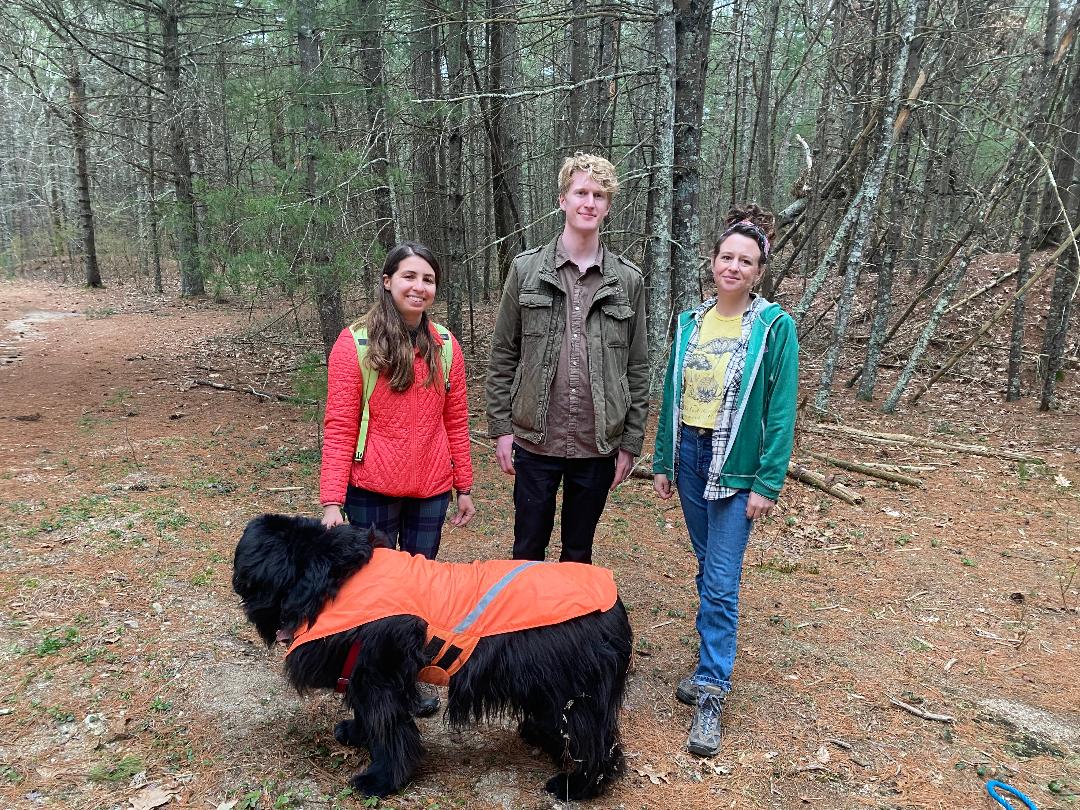Wildfire Study Commission Proposes Fire Road Mapping, Mitigation Plans
February 12, 2024
PROVIDENCE — Nine months after wildfires in Exeter and West Greenwich burned hundreds of acres of woodland, those same fires could now spark something else: change.
After last year’s fires, lawmakers, led by Rep. Megan Cotter, D-Exeter, empaneled a study commission to analyze the state’s response and existing policies regarding wildfires with an eye on preventing the next one. With Rhode Island getting hotter and drier during the spring and summer, it’s only a matter of time before another forest goes up in smoke.
Despite the prevalence of forestland in Rhode Island — 3 out of every 5 acres in the state is forestland — state and local officials, as well as private property owners, often lack a comprehensive plan to manage wildfires.
“I think it’s been eye-opening,” Cotter, who chairs the study commission, told ecoRI News. “I think a lot has come to light, and we’re going to have some great recommendations for the General Assembly.”
The study commission, which has been meeting monthly since September, is gearing up to write its final report with key policy recommendations for forest management and wildfire prevention. Commissioners met Feb. 2 to discuss potential findings.
Among their recommendations? A proposal to use a geographic Information system (GIS) to map all fire roads on all forestland around the state, beginning with areas owned and managed by the Rhode Island Department of Environmental Management. Commissioners are also keen to improve outreach to private landowners of forested properties and help them craft fire mitigation plans.
Commissioners also discussed recommending adding wildfire mitigation to municipalities’ hazard mitigation plans, and developing a statewide wildfire contingency plan with available resources and appropriate contacts.
The rub? Similar plans don’t already exist because many rural towns in Rhode Island, where the bulk of the forestland is, don’t have extra money or staffing power for wildfire mitigation plans. Putting out last year’s wildfires took a combined effort from local firefighters, departments in other towns, fire departments in Massachusetts and Connecticut, and the Rhode Island National Guard. Any local fire mitigation plans would require approval by the local municipal fire department.
“A lot of rural towns in particular don’t have a deep bench, meaning there’s just not a lot of people to do it,” commission member Scott Millar said at the recent meeting. “Local fire companies are volunteers; they’re already stretched pretty thin. Town planners in rural towns are part-time and some of them don’t have a planner at all.”
Commissioners indicated sources for funding were available. The Natural Resources Conservation Service (NRCS) told the study commission at a meeting last year that, thanks to federal laws like the Inflation Reduction Act and Bipartisan Infrastructure Law, the program had more money than projects it could spend it on.
The study commission’s work is likely to become ongoing on a rolling basis. Among DEM’s stated recommendations last week was an annual meeting between rural fire departments, Rhode Island Emergency Management Agency, and the department to strengthen coordination before wildfire season.
Meanwhile, Cotter has introduced two bills to boost forestry management in the state. The first, H7258, would allocate 10 full-time equivalent (FTE) positions within DEM’s forestry division. Cotter said she would like to see more people in the department performing outreach to large, forested landowners, but also more rangers to enable DEM to have a greater presence on state property and prevent illegal dumping in management areas like Arcadia.
“There’s so many roles to fill, 10 FTEs is barely scratching the surface,” Cotter said.
In 1990, DEM’s forestry division employed 18 laborers, 16 rangers, seven foresters, and two equipment operators. There are now three laborers, four rangers, six foresters, and no equipment operators.
Cotter’s other bill (H7550), introduced Feb. 6, would add $16 million to the proposed green economy bond, including $3 million set aside for forestry management purposes.
The study commission is expected to meet and vote on its recommendations in a meeting later this month.




It would only help to ban smoking on state lands.
Wondering if there are any studies on whether or not fires start more easily in “shaded fuel breaks”. Does removing the tree canopy and opening up the forest along fire roads make the forest floor more likely to flare from all of those tossed cigarette butts? Hope not.
I live on 2 acres that are mostly forested. In the past 10 or so years there are so many trees down and I’ve been concerned about forest fires for years, especially on 4th of July during droughts. Some of my neighbors seem to have no awareness of how an errant spark can start a fire during extremely dry conditions. I know fireworks are legal in RI (not sure how THAT happened!), but I think it would be prudent to ban them (except perhaps by licensed professionals at events) during droughts, much like there are water bans. Here in Hopkinton I doubt a ban would be enforced, but it may raise awareness of fire risk.